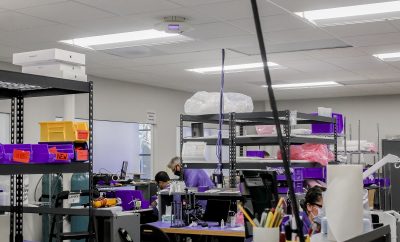
News
Implanted Device Helps Two Paralyzed People Walk Again
Kelly Thomas’ truck flipped with her inside, causing her to become paralyzed. Jeff Marquis became paralyzed after a devastating mountain biking incident. Now, thanks to a study conducted by researchers at the University of Louisville, they both have regained walking function to a degree they were previously unable to do.
1.3 million people in the U.S. are paralyzed due to spinal cord injuries, and with limited treatment options, it can be exceptionally difficult for them to gain independence and live a life unhindered by their injuries. Thanks to a revolutionary implanted device, people like Thomas and Marquis are able to regain some function in their legs.
Susan Harkema, associate director of the Kentucky Spinal Cord Injury Research Center at the University of Louisville said: “This isn’t taking them back to before their injury, but it’s giving them significant, incremental return of function, and health — and that can make their daily lives substantially better.”
The device, which Thomas calls the “Junior” is a 16-electrode array that delivers electrical stimulation to the spinal cord. She says “it was like watching fireworks, but from the inside.” While the technique used by this device isn’t completely effective for everyone, it has allowed other study participants to stand, hold their torsos upright, and even move their legs, all things they had been told would never happen again.
The Junior is the Restore Advanced SureScan MRI Neurostimulator made by Medtronics, and its FDA-approved for pain management. The device is controlled by the user of the device, communicating through their skin to a hub in the abdomen. Thomas says, “I have to have a remote to turn myself on and off, and when it’s off I’m completely paralyzed. Whenever it’s on I can kick my legs out, I can walk, I can move my toes. I can do pretty much anything I need to do.”
While researchers are still unsure of how exactly this device works, they theorize that the device is capable of recharging the spinal cord so it can properly receive electrical stimulation from the brain. Jennifer Collinger, a professor of physical medicine and rehabilitation at the University of Pittsburgh, said, “This is the first time that anybody has demonstrated functional walking activity for somebody with complete spinal cord injury.”
These days, Thomas is back home living with her parents, while pursuing a degree in criminal justice at the University of Central Florida. She is able to get around on her own, with the help of her walker and the implant. She hopes to soon be able to be strong enough to support herself on her own, without her walker.





0 comments